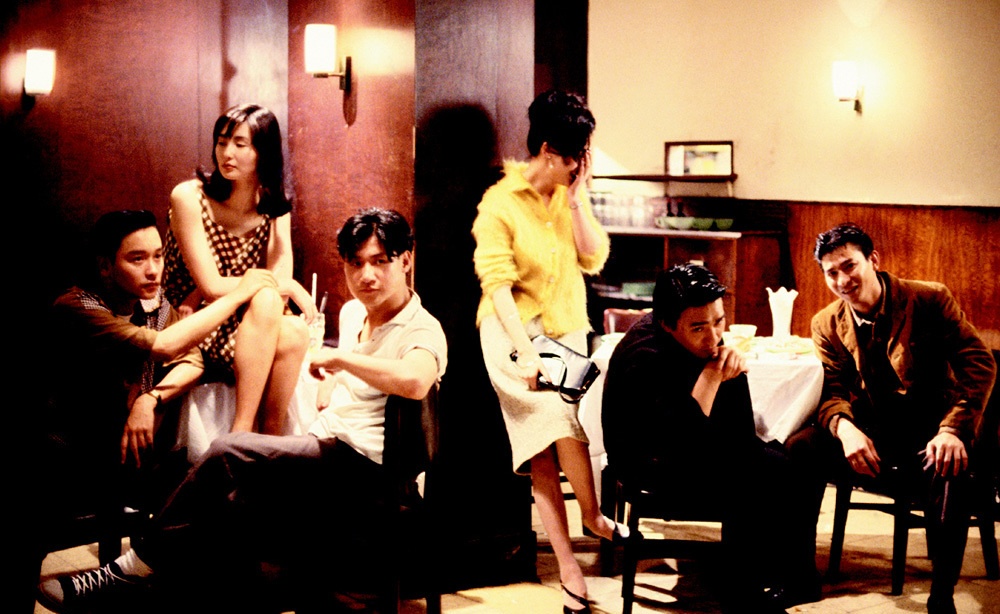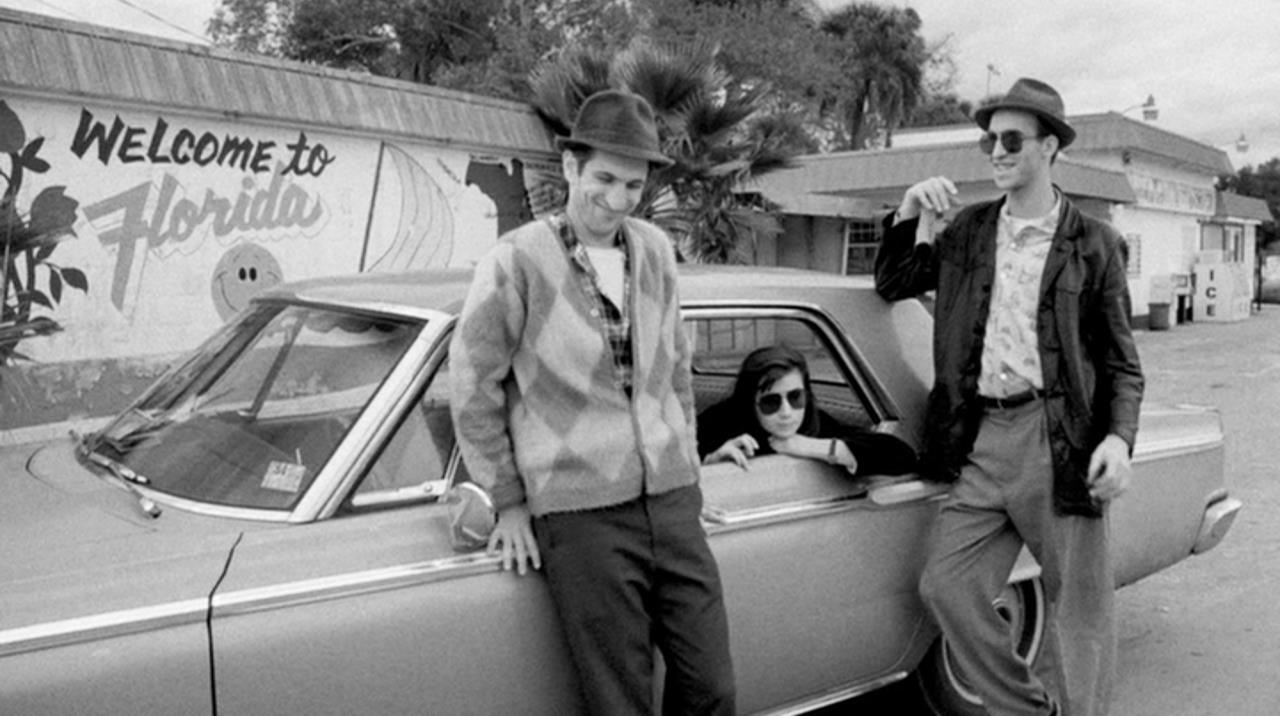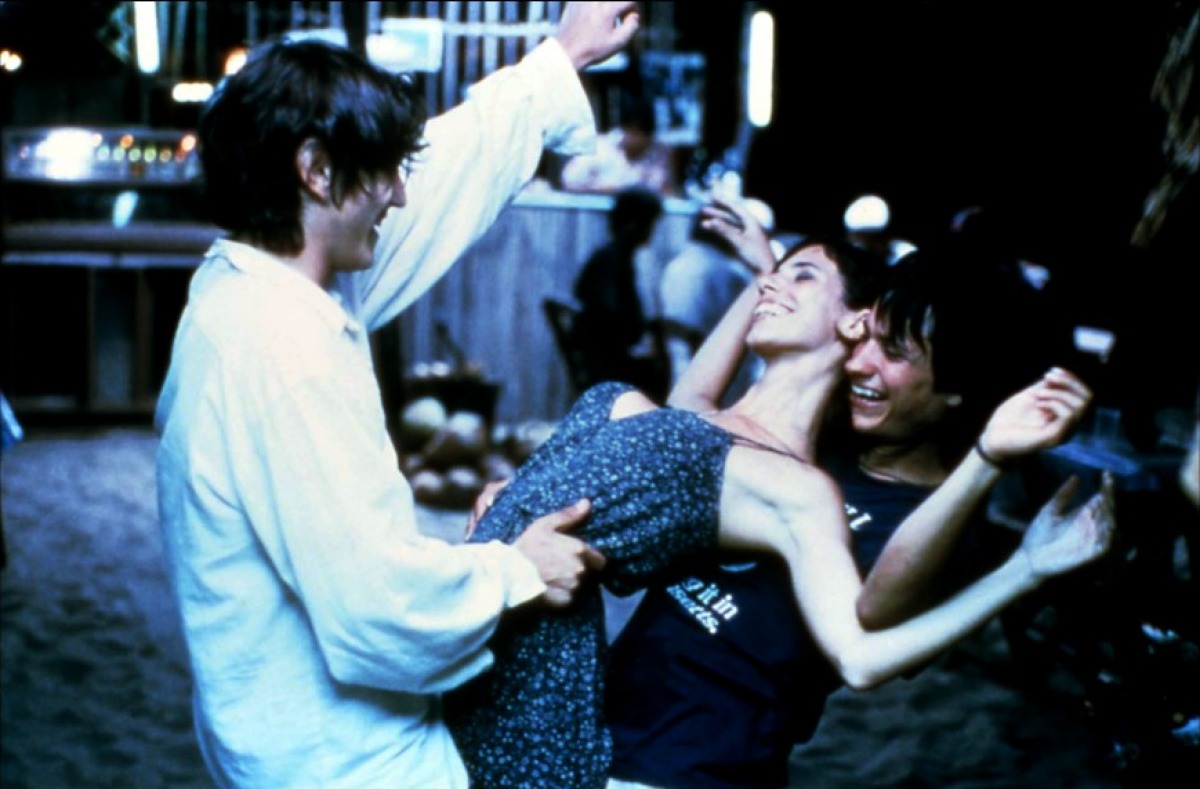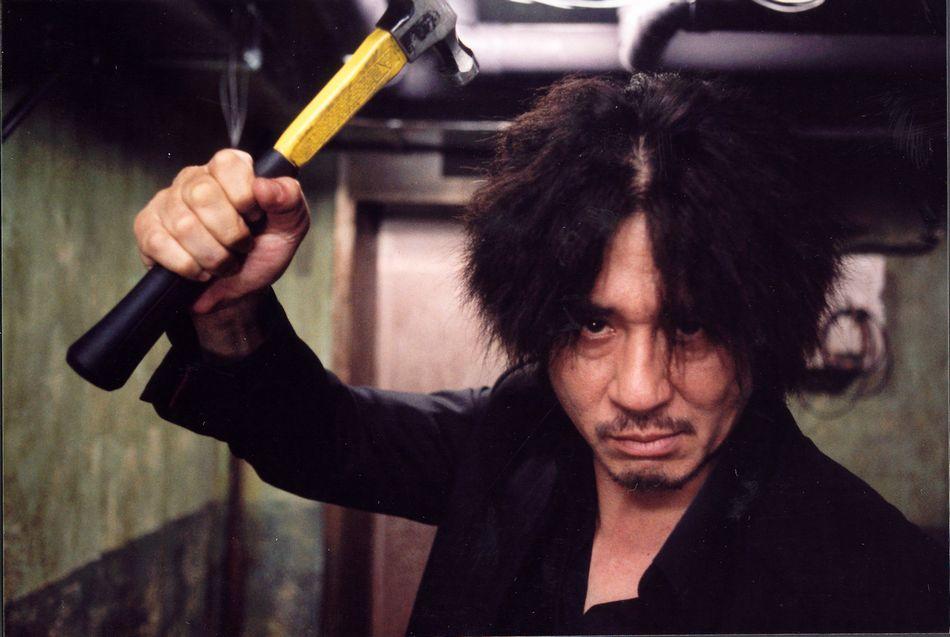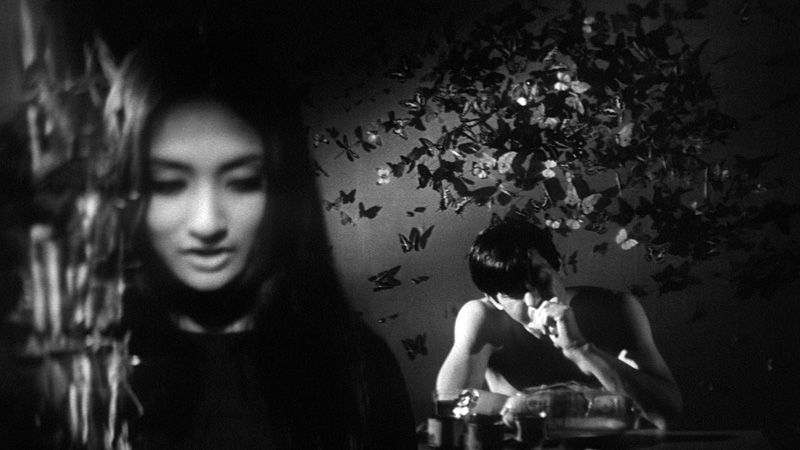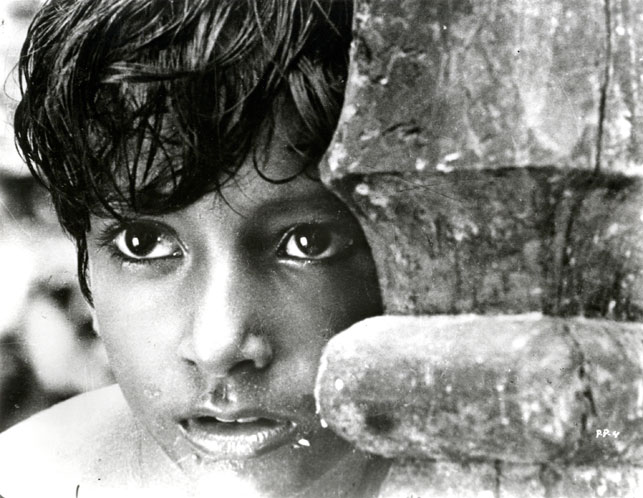7. Hong Kong New Wave
Whilst most films in China were made in Mandarin Chinese and filmed on stages, a few Cantonese speaking Hong Kong filmmakers who had studied European films, decided to break apart from the mainstream. The culture and history of Hong Kong is very different from the rest of China and these filmmakers show it.
The new wavers made films grittier and in their natural Chinese dialect. They were inspired by Italian and French cinema and used real locations. They pushed for their own identity. A lot of films were thrilling crime films about the Triad gangs or Martial art films. Those that were of a different genera like comedy or romance would have a fast energy like an action film.
Major Figures:
Wong Kar-Wai
John Woo
Ann Hui
Tsui Hark
Notable Films:
“Boat People” (1981 dir. Ann Hui)
“Days of Being Wild” (1990 dir. Wong Kar-Wai)
“A Better Tomorrow” (1986 dir. John Woo)
“The Butterfly Murders” (1979 dir. Tsui Hark)
This is another movement that never really died. Hong Kong cinema is now a big industry in world cinema and inspires action films across the globe. Without this movement, Hong Kong would not have such incredible films as it does to days, which have inspired Quentin Tarantino.
“My films are never about what Hong Kong is like, or anything approaching a realistic portrait, but what I think about Hong Kong and what I want it to be.” – Wong Kar-Wai
8. No Wave
No wave wasn’t just a film movement but also a music and art movement by a group of young creative people living on the Lower East Side of New York City. Money was tight but their minds were free.
The films were mostly made on either Super 8 or 16mm film in a guerrilla filmmaking style inspired by French new wave. The stories were transgressive. It was a great practice for the filmmakers who would go on to have successful careers. Vincent Gallo and Steve Buscemi both got their start by acting in no wave films.
Major Figures:
Amos Poe
Jim Jarmusch
Notable Films:
“Rome ’78” (1978 dir. James Nares)
“Subway Riders” (1981 dir. Amos Poe)
“Stranger Than Paradise” (1984 dir. Jim Jarmusch)
These films boosted American independent cinema and helped push trasngresive films. Jim Jarmusch and Amos Poe continue to work. Vincent Gallo went on to direct a few transgression films after the movement had finished. They didn’t wait for a studio, they just did it their way and inspired filmmakers to not focus on mainstream subjects. With a do-it-yourself attitude it was the precursor in American independent cinema to Mumblecore.
“When I left Ohio when I was 17 and ended up in New York and realized that not all films had the giant crab monsters in them, it really opened up a lot of things for me.” – Jim Jarmusch
9. Nuevo Cine Mexicano
New Mexican cinema is a current ongoing wave of films and filmmakers coming from Mexico that began in the early 1990s. These films stay away from the typical Narcoculture and instead take inspiration from American and European films.
The films focus on person expression and changed Mexican cinema to a serious force in world cinema. They have a flare of Mexican culture, realism and romanticism.
Major Figures:
Alejandro Gonzalez Inarritu
Alfonso Cuaron
Carlos Reygadas
Guillermo del Toro
Notable Films:
“Danzon” (1991 dir. Maria Novaro)
“The Devil’s Backbone” (2001 dir. Guillermo del Toro)
“Amores Perros” (2000 dir. Alejandro Gonzalez Inarritu)
“Battle in Heaven” (2005 dir. Carlos Reygadas)
“Y Tu Mama Tambien” (2001 dir. Alfonso Cuaron)
“Biutiful” (2010 dir. Alejandro Gonzalez Inarritu)
“Japan” (2002 dir. Carlos Reygadas)
These films are still being made and many directors are making their way and working in mainstream Hollywood. It is influencing the film world with a Mexican flare and helping to grow Mexicos film industry.
“I have a real thing for Mexican directors. And I love Guillermo del Toro and Alejandro Gonzalez Inarritu.” – Emma Watson
Check out our essential New Mexican film list.
10. South Korean New Wave
South Korea cinemas started to sell more tickets of domestic films apposed to foreign in 1998. In recent years South Korean films have become sought after and watched by film lovers. The peninsula had been known for years for its animation work for American cartoons like The Simpsons, but now they have a live action voice by filmmakers from a unique culture.
What makes the films different is very much the culture. To the North is the oppressed North Korea that threatens their country. A few defectors have luckily made it across the boarder. Oldboy shows the isolation similar to North Korea and “The Host” (2006 dir. Bong Joon-ho) shows fears of invasion. They also have a dark way of telling stories and push the limits.
The films take inspiration from not only western and Japanese new wave films but also from Pansori: a Korean style of story telling. Korean films have rich stories but are at times criticised for going outside comfort zones when it comes to violence and horror.
Major Figures:
Park Chan-wook
Ki-duk Kim
Kim Jee-Woon
Bong Joon-ho
Notable Films:
“Memories of Murder” (2003 dir. Bong Joon-ho)
“A Tale of Two Sisters” (2003 dir. Kim Jee-woon)
“Oldboy” (2003 dir. Park Chan-wook)
“Mother” (2009 dir. Bong Joon-ho)
“Pieta” (2012 dir. Ki-duk Kim)
“Secret Sunshine” (2007 dir. Lee Chang-dong)
“Samaritan Girl” (2004 dir. Ki-duk Kim)
The Korean new wave is starting to transform. The South Korean film industry is producing more films because of the wave and filmmakers Park Chan-Wook and Bong Joon-ho have began work in Hollywood. Bong Joon-ho has also worked alongside French filmmakers Michel Gondry and Leos Carax in “Tokyo!” (2008). The film Oldboy inspired and was remade in 2013 by Spike Lee. There is also an unlicensed Indian remake.
“There is a lot of extreme emotion in Korean film. It’s because there are a lot of extremes in Korean society.” – Bong Joon-ho
Check out our essential South Korean New Wave film list.
11. Japanese New Wave
After the American occupation following world war two, the film industry boosted. Samurai films would later go onto inspire star wars. Ozu’s melodramas would inspire western films. And Kaiju monster and sci-fi films would also gain worldwide notoriety whilst being a metaphor for the destruction of Japan during world war two as well as boosting the growing toy industry. This was a golden age for Japanese cinema. But other filmmakers wanted to be more expressive with the new freedom.
Thus came the Japanese new wave. They strayed away from the norm and went for more realist gritty thrillers. Touching on taboo subjects and controversial themes, they didn’t hold back and scored their films with Jazz music. Just as new Hollywood, the Japanese studios stopped only making films that were appropriate for families to watch. Killings were no longer implied or suggested by giant monsters or heroic samurais but committed by sick criminals.
Major Figures:
Seijun Suzuki
Nagisa Oshima
Shohei Imamura
Hiroshi Teshigahara
Masahiro Shinoda
Notable Films:
“Branded to Kill” (1967 dir. Seijun Suzuki)
“Tokyo Drifter” (1966 dir. Sijun Suzuki)
“Intentions Of Murder” (1964 dir. Shohei Imamura)
“The Face of Another” (1966 dir. Hiroshi Teshigahara)
“Japanese Summer: Double Suicide” (1967 dir. Nagisa Oshima)
“Double Suicide” (1969 dir. Masahiro Shinoda)
The taboo yakuza crime stories inspired many. Hong Kong new wave director John Woo was inspired to make thrilling triad crime films that would go on to inspire many of Hong Kong’s filmmakers like Johnnie To.
No wave director Jim Jarmusch was inspired to push taboo subjects and filmmaker Quentin Tarantino also took inspiration from these films. Japanese new wave has also inspired the new wave of South Korea, which at times, feature horrific taboo subject maters.
“Why make a movie about something one understands completely? I make movies about things I do not understand, but wish to.” –Seijun Suzuki
Check out our essential Japanese New Wave film list.
12. Parallel Cinema (India)
The second largest film market is India. The market has attracted the likes of Disney. The biggest part of Indian cinema has always been Bollywood: Hindi language films made in Mumbai (formally Bombay) that base styles on historical Indian epics, ancient Sanskrit dramas, Parsi and Hollywood musicals. Indian cinema has become known for lavish dance sequences and romantic music numbers. Films were rushed out for profit and realism was a rarity in Indian cinema.
However realism was apparent in a few films such as 1946’s “Neecha Nagar” which Indian filmmakers from the state of West Bengal chariest. Rather than copy the style of Hindi language films like other areas of India had done during the Indian golden age, Bengali filmmakers were inspired by Bengali literature and Italian neo realism and loathed the intrusive dances. The new wave would then extend to other regions in India.
Major Figures:
Satyajit Ray
Ritwik Ghatak
Mrinal Sen
Notable Films:
“Aparajito” (Language: Bengali 1956 dir. Satyajit Ray)
“The Rat Trap” (Language: Malayalam 1981 dir. Andoor Gospalekrishnan)
“Parama” (Language: Bengali 1984 dir. Aparna Sen)
“Ajantrik” (Language: Bengali 1958 dir. Ritwik Ghatak)
“Akaler Sandhane” (Language: Bengali 1980 dir. Mrinal Sen)
“Do Bigha Zamin” (Language: Hindi 1953 dir. Bimal Roy)
“Do Aanken Barah” (Language: Hindi 1957 dir. V. Shantaram)
The Indian new wave changed Indian cinema forever. Mainstream Indian cinema still consists of dancing. Even though this movement grew in the 1970s and 80s, it struggled with money and distribution in the early 1990s but allowed and inspired Indian filmmakers to make films different from Bollywood.
This new wave pushed the way and allowed Indian directors like Mira Nair, Deepa Mehta, and Mani Ratnam to make thought provoking dramas. As more and more parrell type films are coming out of Indian and gaining recognition such as 2004’s Hindi film “Black Friday”, there seems to be the possibility of resurgence. These films also inspired filmmakers outside of India by winning awards at the top film festivals around the world.
“I think they quite like me when I work because I’m one of the safer directors to back, because even if my films don’t bring their costs in back home, once they’re shown outside of India they manage to cover the costs.” – Satyajit Ray
